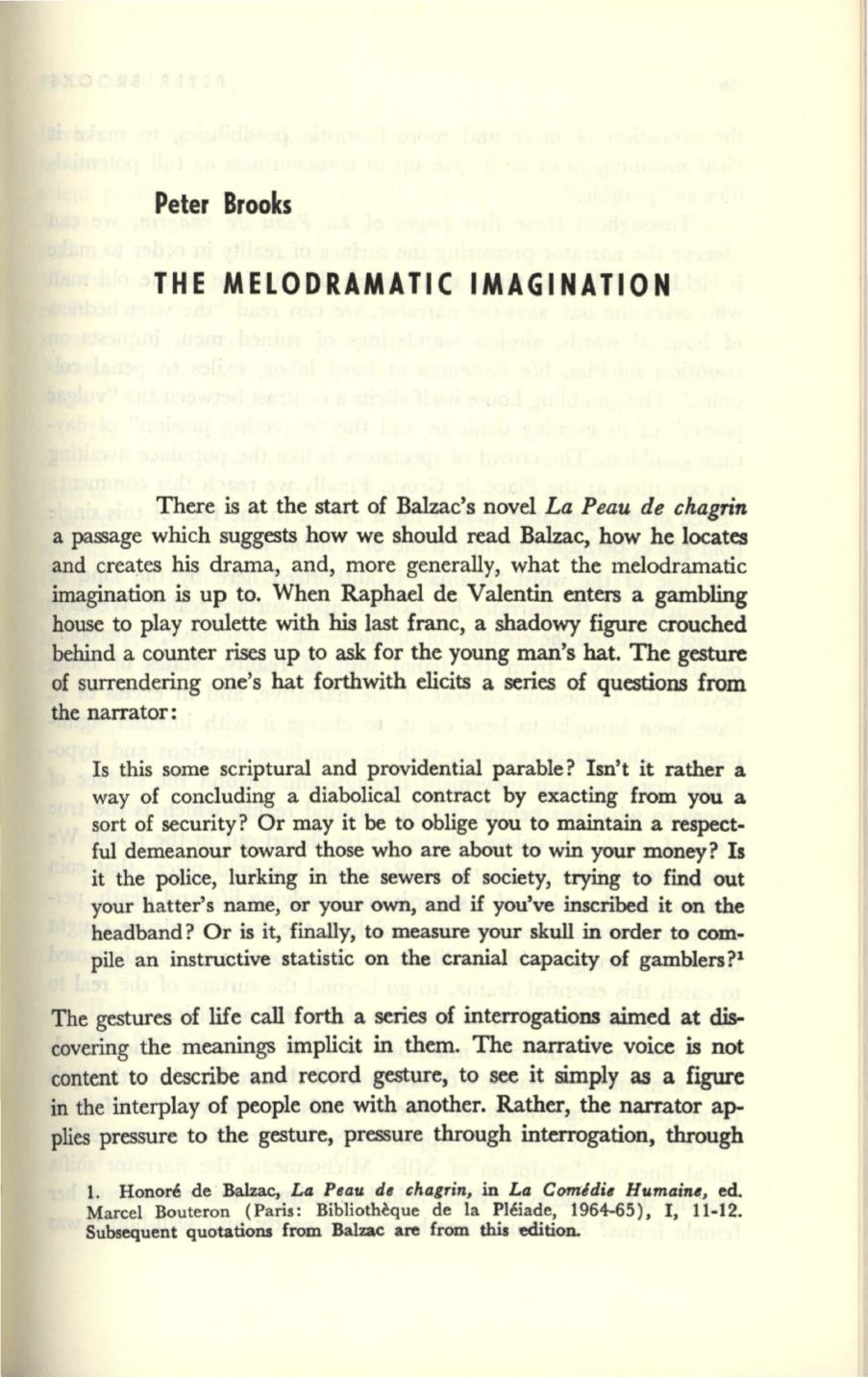
Peter Brooks
THE MELODRAMATIC IMAGINATION
There
is
at the start of Balzac's novel
La Peau de chagrin
a passage which suggests how we should read Balzac, how he locates
and creates his drama, and, more generally, what the melodramatic
imagination
is
up to. When Raphael de Valentin enters a gambling
house to play roulette with
his
last franc, a shadowy figure crouched
behind a counter
rises
up to
ask
for the young man's hat. The gesture
of surrendering one's hat forthwith elicits a series of questions from
the narrator:
Is this some scriptural and providential parable? Isn't it rather a
way of concluding a diabolical contract by exacting from you a
sort of security? Or may it be to oblige you to maintain a respect–
ful demeanour toward those who are about to win your money? Is
it the police, lurking in the sewers of society, trying to find out
your hatter's name, or your own, and
if
you've inscribed it on the
headband? Or is it, finally, to measure your skull in order to com–
pile an instructive statistic on the cranial capacity of gamblers?l
The gestures of life call forth a series of interrogations aimed at
dis–
covering the meanings implicit in them. The narrative voice
is
not
content to describe and record gesture, to see it simply as a figure
in the interplay of people one with another. Rather, the narrator ap–
plies pressure to the gesture, pressure through interrogation, through
1.
Honore de Balzac,
La Peau de chagrin,
in
La Comldie Humaine,
ed.
Marcel Bouteron (Paris: Bibliotheque de la Pleiade, 1964-65), I, 11-12.
Subsequent quotations from Balzac are from
this
edition.


